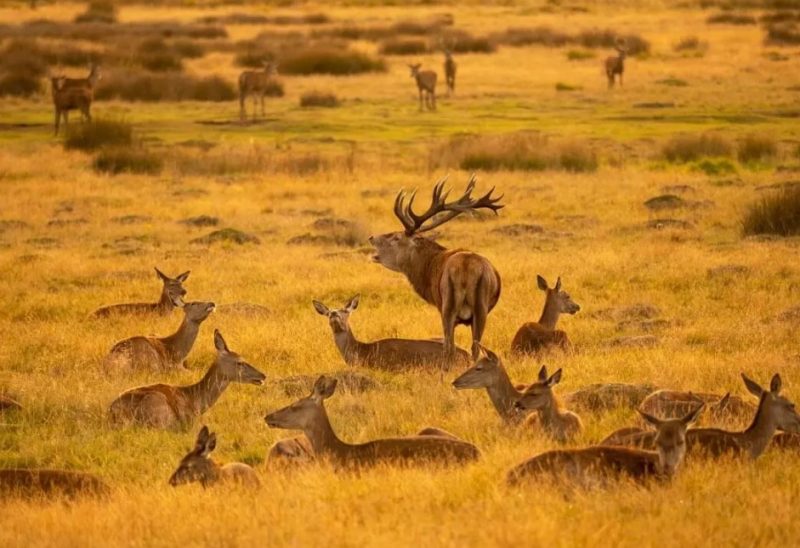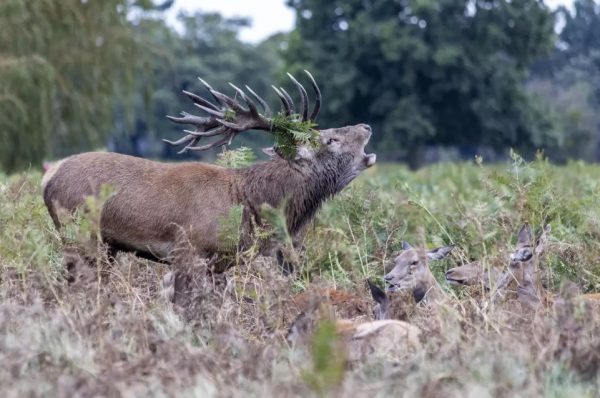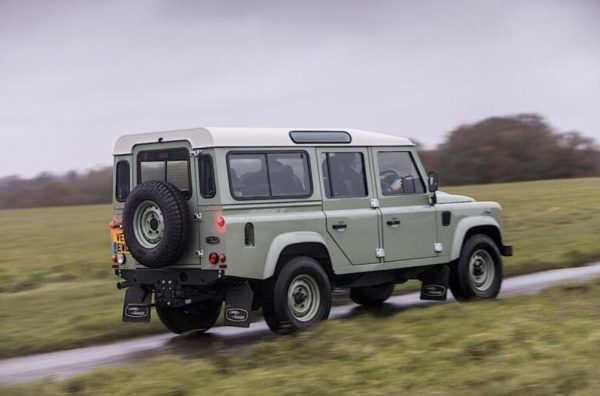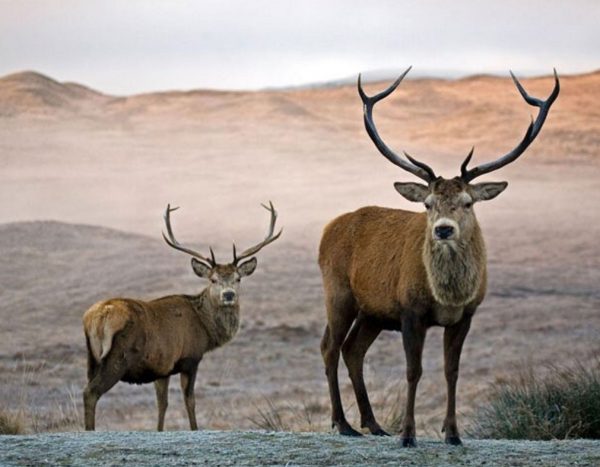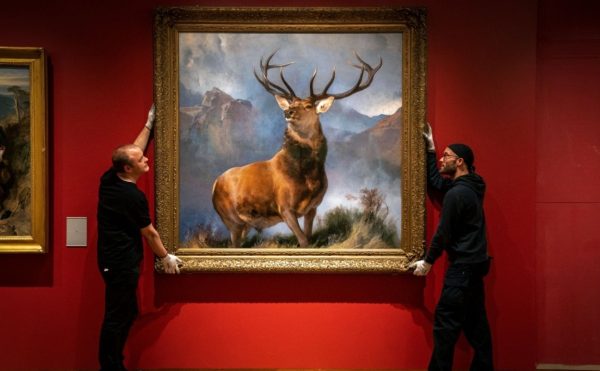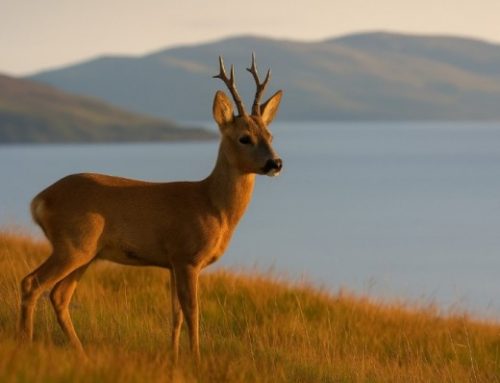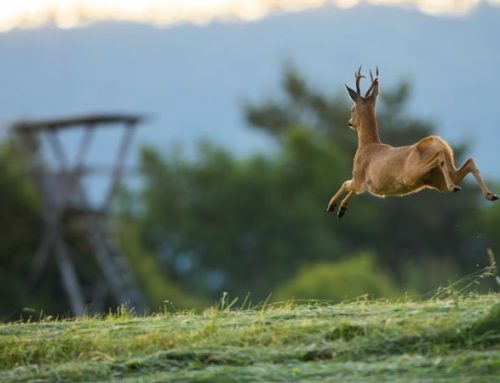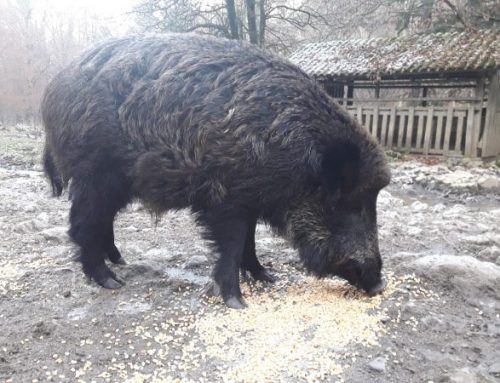Waves of thin rain, shaped like large parentheses, embrace my small cabin, which has become a makeshift refuge from the elements during my deer hunting journey.
A swirling wind confuses my thoughts, shakes my spirit, and transports it back to days gone by, to the toil of daily life, and to the pain of recent farewells.
Thus pass the very first hours of this last day of hunting, which has granted me few calls: too warm! Sixteen degrees are unusual for Scottish October, and for this reason, the female deer are not yet ready; this is evidenced by the sparse groups that still welcome yearlings or males too immature to be dominant.
The forestry department has instructed the gamekeeper, responsible for the area, to cull some young deer and some anomalies precisely at this time when our focus is on the mighty “stags”.
After an illusory start to the rutting during the first evening, the deer fall into a worrying silence, and after repeated searches of the areas favored by the animals, without having spotted anything, we decide to penetrate into the woods from which the deer should scream their desire.
In the tangle of branches, among mud and peat that swallow our shoes, causing the sound of a sonorous kiss, we proceed cautiously in the hope of spotting an old male, but the noise we make is excessive and despite the myriad of tracks, we fail to spot anything.
We return to the Defender, drenched in rain and sweat, to continue inspecting the “glens”, the valleys that we know the herds favor, but we only spot a few sparse females and a few yearlings.
The forestry department informs us of the presence of one of these young deer still in velvet and with evident malformations, for which culling is requested if an encounter occurs. Towards evening, the poor yearling is struck by the seven-millimeter bullet at a distance of about seventy meters from the path. It appears decidedly in pain, with a small body and a large head on which the two still-velveted antlers stand out: a good sanitary culling.
Another morning spent wandering through the most promising woods, while the scratches from the brambles multiply on hands and face, accompanied by a light sprinkling of ticks, for whose dangerous abundance we are very vigilant and attentive. Still no sightings.
In the early afternoon, we come across a group of four deer, including a six-point male suitable for culling, in a field populated by sheep in the lowest area. We approach from downstream of the animals, which are in the upper part of the field, just a few meters from the fir forest and about a hundred steps from a dry stone wall that should provide us with protection during the approach.
It takes us a good half hour, but we complete the approach correctly, after crossing a couple of fences, shooing away a stubborn ram that didn’t want to move, and flushing out four snipes pecking peacefully in the damp meadow. I lean slightly over the wall: the deers are still there, and the male is closest to the forest, about eighty meters away.
A female immediately raises her head towards us, and we quickly sink among stones and ferns to disappear from view. I signal to the cameraman: after I rest the rifle on the wall, he can slowly rise, and I will wait for his OK, provided the stag doesn’t decide to bolt towards the trees.
I rest the barrel, the six-pointer looks at me, and starts moving towards the forest. I hear the cameraman’s clear “Go” and the shot goes off in sync. The females dart towards the firs, while the echo of the shot in the valley is as clear as a drumbeat. The deer lowers its hindquarters but then runs towards safety. I let out a second useless shot as the animal is already collapsing from the first shot.
Having successfully completed the approach and conclusion, we feel rejuvenated despite the absence of the rutting call, which with its magic would have given a different feel to this hunt. But this is how it is, and we must make the best of it, also trying to comply with the mandate entrusted to us by the forestry department.
The next morning starts with the usual tour of the best areas without any rutting calls or sightings. We then decide to venture into one of the hidden valleys explored in May during my previous stay. It’s strategically positioned in a basin protected by a circle of hills with only one outlet towards a dense stand of firs; tufts of ferns brush its margins, while a stream flows on the southern side in the woods.
Traces are abundant, but we fail to spot anything. Entering among the trees is a quick move, and we continue the reconnaissance for almost two hours. We emerge soaked at the top of a hill with the suspicion of having gone the wrong way: as far as the eye can see, only hills of heather and groves. I regain composure, and after a long scan downstream, I spot a stack of wood on the edge of one of the trails. We resume the journey in that direction, inside a stream flowing, of course, downhill, and which will lead somewhere…
Now we find ourselves in a treacherous flooded meadow among fern bushes, rotting logs, and small trees that resemble hazelnuts. We proceed under a typically Scottish shower, drenched above and below, and finally, like a mirage, we spot the beaten earth strip of the trail… at least four kilometers downstream from the meeting point.
A hot shower and a struggle with yet another tick picked up in the woods, then salmon in abundance.
The sixteen degrees persist, and not even a hint of rutting. Even during the nightly excursions to locate possible new areas, we hear nothing; we only spot sparse groups of females without a dominant male. There is a large meadow frequented by females facing a magnificent oak forest, which we check from the trail – about 320 meters – every day, at dawn and dusk. On the penultimate day, as usual, we pass by the meadow: it seems deserted, but a barely perceptible movement on the edge catches my attention.
I quickly get out of the Defender and lie down on the hood, looking through the scope to confirm what I saw. Neither the gamekeeper nor the cameraman spot anything from their position. I, being more angled than them, manage to spot a female right under a large oak tree: suddenly, a majestic male literally throws himself on her, concluding the copulation with the classic backward jump typical of deer.
The stags appear tall, their build decidedly powerful, but given the distance, I can’t assess the trophy. After the two animals have disappeared into the woods, I devise a strategy. I know that behind the forest there is another meadow leading to a vast and intricate fir grove, and I believe the two deer are heading there; therefore, I decide to try to intercept them by following a small trail perpendicular to ours, which leads straight to the second meadow. I find the gamekeeper’s approval and, dragging the cameraman with me, I set off with the determination of a Templar to conquer the hunting “Holy Grail.”
We advance, cautious but with a brisk pace, until we reach the trail where the expanse of grass leading to the fir grove begins: a small half-destroyed fence marks its border.
And then movement to my right. Sadly followed by that single female, the stag emerges from the oak forest, a beautiful trophy “without appearing to be one” (almost as sad as flowers and grass on a railway embankment… please forgive the Guccinian reference). I don’t immediately notice its size because I’m focused on the conclusion of this beautiful stalking. I gesture to the cameraman to get as close as possible. He’s already prepared and whispers to me, “Whenever you’re ready.” It’s a moment: I rest the barrel of the seven-millimeter on what remains of the fence, and the roar of the shot seems to accelerate the monarch of that valley, who leaps and proceeds in his escape until he’s brought down by another shot.
I cover the hundred and thirty meters that separate me from the stag in a few instants, while my heart quickens its beats. I turn to the cameraman mumbling something, perhaps shouting some liberating swear word out of astonishment: lying on the ground is “The monarch of the glen,” just as Sir Edwin Landseer captured him on canvas, a mighty twelve-point royal stag with antlers of incredibly unusual length for this area.
On the last day, I execute a good shot on a six-pointer standing two hundred meters away on the side of the hill opposite mine, technically perfect but sterile, devoid of that conquest excitement that only track hunting manages to give me. I think back to the sad monarch, whom I didn’t give the time to establish his harem, and above all, to that female who, I’m sure, will be grateful to me for allowing her, even if only for a few moments, to be a queen.

